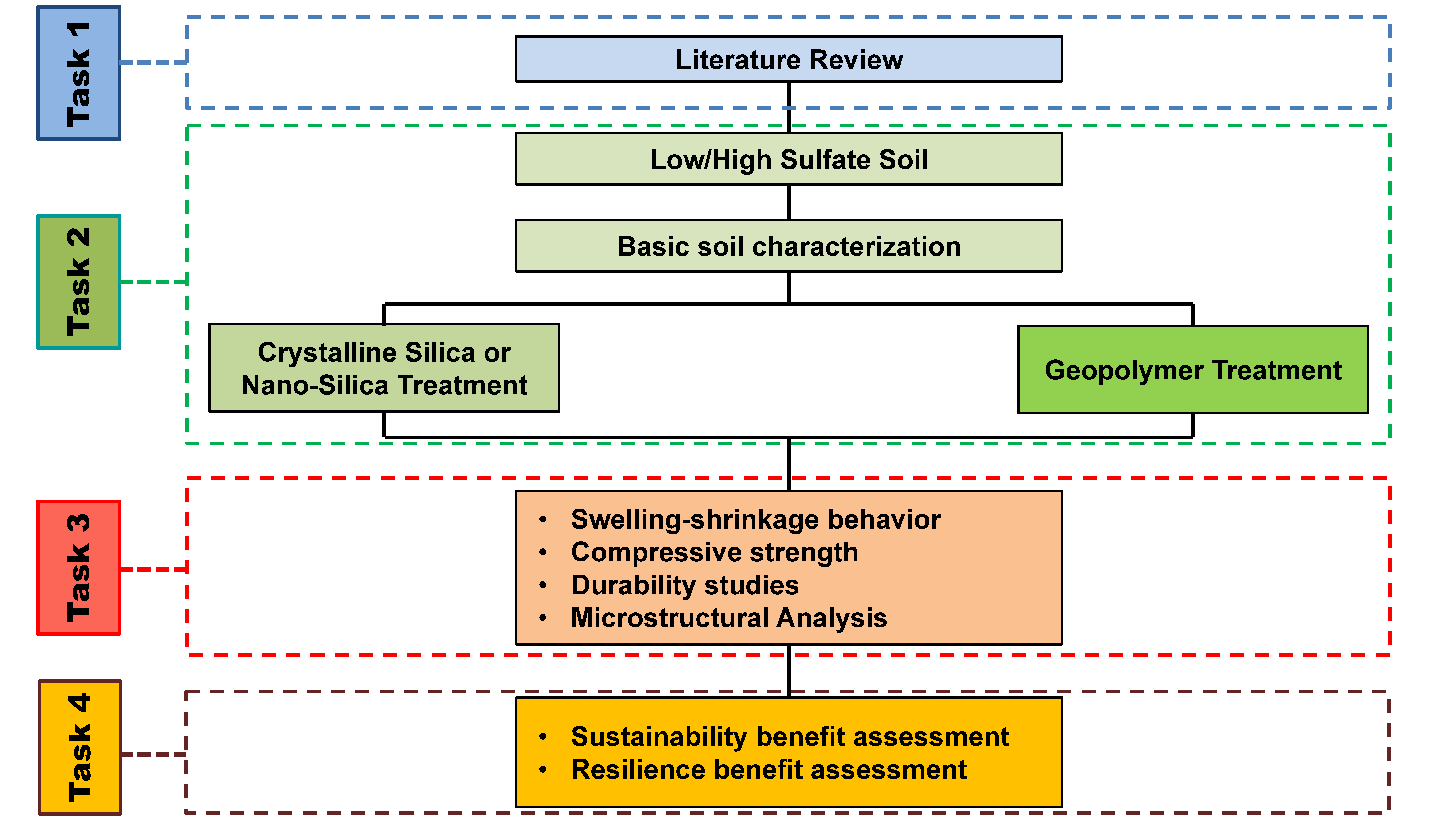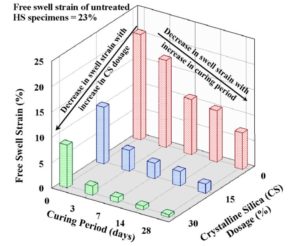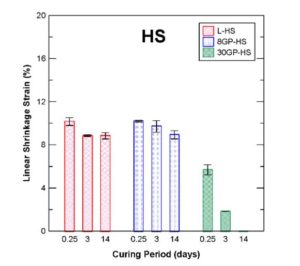Significance of Proposed work
The performance of a pavement section depends on the stability and durability of the underlying subsoil system supporting the pavement infrastructure. Calcium-based stabilizers are commonly used in practice to enhance the engineering properties of problematic soils, and lime stabilization is often used for treating expansive soils. However, the calcium stabilizer treatment of sulfate-rich soils results in the formation of a highly expansive mineral known as ettringite. Still, researchers are continuously striving to identify novel materials that may have the potential to be used as effective co-additives. This research study is aimed at evaluating the applicability of using crystalline or nano-silica based admixture or metakaolin-based geopolymer admixture to stabilize sulfate-rich expansive soils with traditional calcium-based lime stabilizer.
Objectives
- Study alternate sustainable co-additives for stabilizing sulfate-rich soils.
- Developing a Life-Cycle Cost Analysis (LCCA) framework for the application of these novel treatment methods.
Scope of work
- Co-additives that are being studied include
-
- Quarry fines
- Nano-silica based admixture
- Eco-friendly Metakaolin-based Geopolymer
Research Plan

Tasks Accomplished
- Basic geomaterial characterization of both high and low-sulfate soils.
- Studied the improvement in engineering properties, including swell-shrink behavior, unconfined compressive strength, and resilient modulus.
- Conducted durability studies of the treated samples when subjected to moisture intrusion.

Effect of crystalline silica treatment on the free swell strain

Effect of geopolymer treatment on soil shrinkage
Work Planned
- Mineralogical and microstructural analyses: XRD, FESEM, and DSC.
- Identify chemical reaction products in treated soils.
- Sustainability and resiliency studies
-
- Resource consumption, environmental impact, and socio-economic impact
- The resilience of infrastructure to withstand normal and extreme events
Impact on the State of Practice
The utilization of a crystalline-silica-rich waste product like quarry fines to reduce ettringite-induced heaving in lime-treated sulfate soil will be of immense value to the practitioners in the field of geotechnical and transportation engineering as these materials, if effective, will provide sustainable utilization of wastes in civil infrastructure works. Similarly, the utilization of geopolymers has a strong potential to be used as a sustainable and eco-friendly soil stabilizer.
